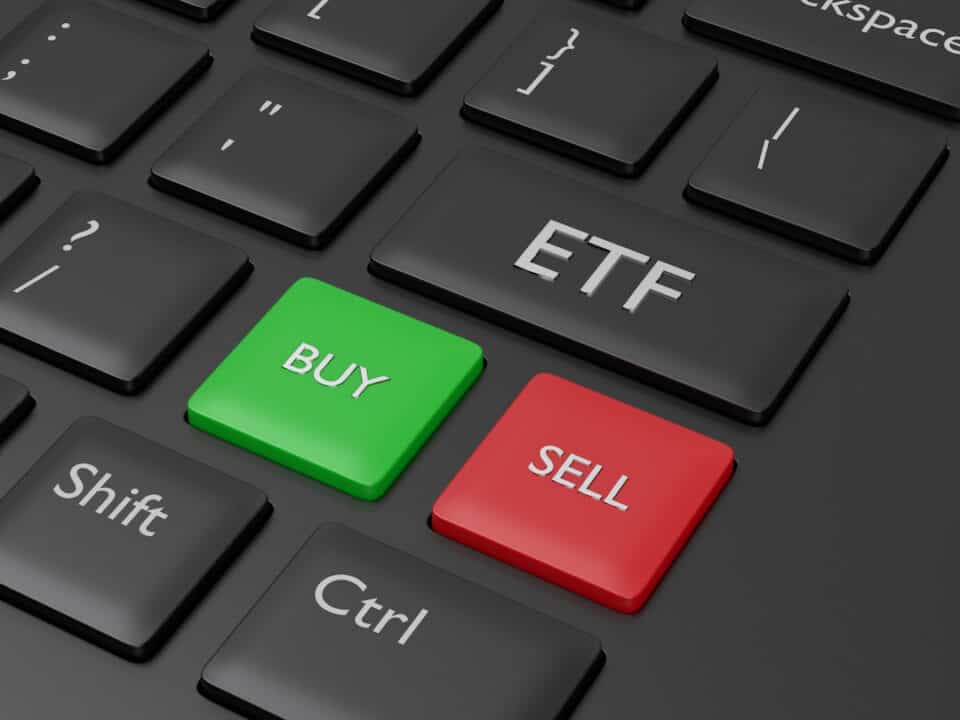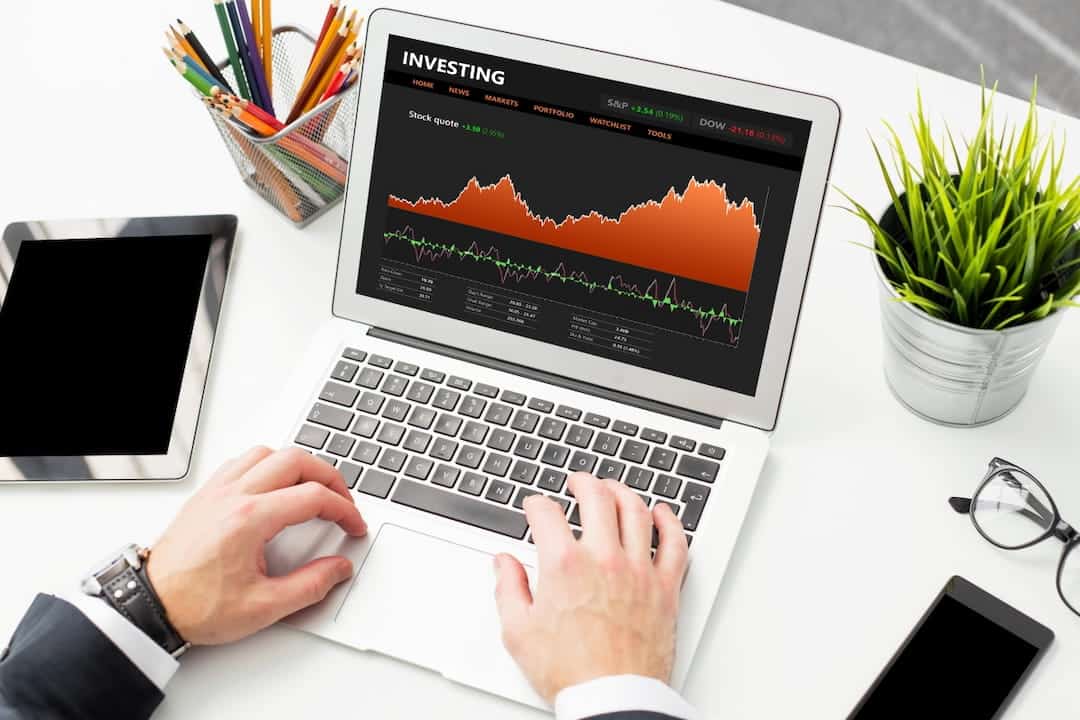The COVID-19 pandemic has transformed the early 2020s into an unpredictable but unique mess for investors, especially for the individual investor. However, among this chaos, many institutional investors quickly looked for an opportunity with a good net asset value to redefine their investment goals.
As it happened, the Canadian energy sector presented investors with good opportunities as oil prices dropped and Canadian natural resources are still a long way from competing with traditional energy sources.
With proper ETFs – see best ETFs for Canadians – and an investment strategy, you can capitalize off this opportunity with lesser risk. So read on for investment advice on the best energy ETF in Canada.
Energy ETFs: Introduction
If you don’t know, exchange-traded funds, or ETFs for short, are funds that are traded on the stock exchange, similar to stock.
However, unlike individual stocks, ETFs are not businesses. Instead, ETFs are investment funds used to invest in pretty much anything (see ‘Bond ETF Canada post). For instance, some ETFs are invested in stock, while other ETFs are in energy (i.e. clean energy ETFs).
The value of an ETF typically represents the value of the investments under the ETF.
ETFs are among the fastest-growing products for investment in the world – check out the best Canadian ETFs. Millions of investors nowadays are investing heavily in ETFs. In 2020, there were over 7.7 trillion US dollars invested in ETFs worldwide.

Investors generally favour ETFs because by buying a single ETF, you’re purchasing several investments through one trade.
Many investors prefer ETFs for their advantages over stock. For example, transparency is standard in the ETF market since their buying and selling prices are always apparent on the stock exchange.
Moreover, an ETF is more liquid than stock, and it’s relatively easy to buy and sell, and ETFs are readily available to investors every day. This is where exchange-traded funds get their name from – being traded on an exchange market.
This easy liquidity means you don’t have to deal with tedious paperwork or invest a minimum sum to buy into an ETF.
Our recommendation:
ETFs also don’t need an expensive team of managers, so ETF management fees are usually lower than those of stocks.
An energy ETF is simply an ETF invested in stocks in the energy sector, such as stocks in the natural gas industry or renewable energy stocks (learn more about sector ETFs, too).
What Is the Top Energy ETF?
Now that we’ve talked about energy ETFs, how to pick them, how to save money on them, and why you should pick them, this article wouldn’t be complete without our list of the top handful of energy ETFs that you should consider.
The list isn’t in order according to any criteria, and we will be discussing some oil and gas ETFs and the two clean energy ETFs on the Toronto Stock Exchange. We’ll also list their management expense ratio (MER), if applicable.
1. Horizons ETFs by Mirae Asset (Oil Futures and Stocks)
Horizons ETFs by Mirae Asset is a leading ETF manager company that holds four of the best oil ETFs in Canada, two in oil futures and two in oil stocks.
Horizons Crude Oil ETF (HUC) – MER: 0.88%
Horizons Crude Oil ETF invests in Solactive Light Sweet Crude Oil Winter MD Rolling Futures Index ER. HUC provides investors with a good opportunity when oil prices are rising. HUC only invests in winter, specifically in December, so this is the most liquid period of the year in this ETF.
Horizons BetaPro Crude Oil Leveraged Daily Bull ETF (HOU) – MER: 1.3%
If you’re a quick trader willing to take on a little more risk for the chance of lavish reward in the short term, then Horizons BetaPro Crude Oil Leveraged Daily Bull ETF is a good ETF to consider. HOU seeks daily investment results, aiming to correspond up to two times the daily performance of the Horizons Crude Oil Rolling Futures Index.
Furthermore, HOU is re-balanced every day, so it’s not the best option for long-term investors.
Horizons S&P/TSX Capped Energy Index ETF (HXE)
Horizons S&P/TSX Capped Energy Index ETF aims to replicate the performance of the S&P/TSX Capped Energy Index, an index that measures the performance of the Canadian energy sector. However, HXE doesn’t own an underlying index as other ETFs do. Instead, it delivers returns through eligible third parties like A-credit-rated banks.
Horizons BetaPro S&P/TSX Capped Energy 2x Daily Bull ETF (HEU)
HEU seeks to correspond two times the daily performance of S&P/TSX Capped Energy Index and aims to do so in no more than one day. However, HEU comes with additional risk since most of its capital is held as collateral cash.
Since HEU is re-balanced daily, we wouldn’t recommend it for long-term investors.
2. BMO (Oil & Gas and Clean Energy)
BMO holds a notable oil & gas ETF and one of the two clean energy ETFs in the TSX.
BMO S&P/TSX Equal Weight Oil & Gas ETF (ZEO) – MER: 0.61%
ZEO is an ETF issued by the bank of Montreal designed to replicate the performance of the Solactive Equal Weight Canada Oil & Gas Index (see other top bank ETFs in Canada).
In February 2020, right before the pandemic, ZEO had a net asset value of about $42 Canadian per share, and by March, that number dropped to under $19. However, they’ve recovered in less than a year and rebounded back to $42 by January 2021, and they continue to rise.
ZEO is a worthwhile option if you’re a long-term investor seeking diversification in one ETF.
BMO Clean Energy Index ETF (ZCLN) – MER: 0.4%
ZCLN is a new fund, having launched on January 20, 2021. ZCLN aims to replicate the S&P Global Clean Energy Index, which has about 100 constituents designed to measure the performance of clean energy companies in geographically diverse markets.
At a 0.4% MER, ZCLN is the most affordable way to get diversified international exposure to the growing renewable energy industry.
3. BlackRock iShares S&P/TSX Capped Energy Index ETF (XEG) – MER: 0.61%
BlackRock is famously one of the best energy ETFs in Canada because of how huge it is, with about $1.33 billion in assets under management as of September 2021.
XEG aims to provide investors with long-term capital growth by replicating the performance of the S&P/TSX Capped Energy Index.
Some of the underlying stocks under XEG include giants like Canadian Natural Resources and Suncor Energy, which make up about half of XEG’s holdings. However, this means that XEG isn’t very diverse, so skip this one if you’re looking for a diverse option.
4. Harvest Clean Energy ETF (HCLN) – MER: 0.68%
HCLN is one of the newest ETFs to launch on the TSX, and it was the first clean energy ETF to do so in Canada, having launched on January 15, 2021.
If you’re an advocate for clean energy, then HCLN is an exciting option as it invests in a portfolio of the 40 most prominent clean energy investors selected by the Clean Energy Investable Universe fund manager.
Uniquely, HCLN invests equally in all 40 selected investments, which means that each fund weighs approximately 2.5% in this ETF.
HCLN is also a highly diversified ETF geographically. To illustrate, only 14.7% of HCLN assets are from Canada, while 30.9% are from the United States, and the rest are from all over the world. But the assets all focus on one renewable energy.
As of October 1, 2021, HCLN has a net asset value of just under $19, but with an MER Of 0.68%, it’s a bit of a pricey one to get into.

Why You Need to Focus on Energy ETFs
The energy sector is enormous, boasting many financial giants on the stock market and emerging markets for renewable energy in Canada.
The energy sector also has somewhat benign market conditions, and as we’ve seen recently, it can fluctuate up and down in reaction to many factors. For example, demand can quickly go down if people stay at home and are less in need of petroleum to fuel their cars.
Furthermore, there’s a diverse number of huge sub-markets within the energy sector, such as oil, coal, natural gas, renewable energy, and so on.
In Canada, some renewable energy companies on the Toronto Stock Exchange offer promising opportunities due to the rise of clean energy companies. Still, there’s room for investment in oil due to the recently-fallen oil prices.
It’s worth noting that despite the recent dip in oil demand, we can still assume that it will rebound because we know energy isn’t going anywhere, and we’ll always need it, but perhaps in different forms. We’ve seen in the past how energy companies have seen long-term capital growth after recessions.
After all, you need energy for your car and your house, and cities need it to light up the streets. It’s an integral part of our lives and continues to take a more significant role.
Why ETFs Instead of Stocks?
Now that you know why the energy sector is worth your time and the promising potential of clean energy, why bother with ETFs instead of outright investing in energy companies’ stocks?
Buying directly into a company’s stocks isn’t cheap and could be out of your price range, so an investment fund could be your only path.
Also, having a diverse investment strategy can help reduce risk since you’re not relying on one entity to succeed. Instead, you’d be spreading your investment across several companies so that if one of them performs poorly, the rest can mitigate your losses. Or, as they say, don’t put all your eggs in one basket.

However, investing in various companies isn’t cheap either, let alone tedious. Buying into one company is already enough of a hassle, let alone doing it with several companies and keeping accurate track of them. On the other hand, you can have a robo advisor which means that you do not have to do extensive research yourself, so it’s worth checking it out, too.
By buying an ETF, you make that easier since ETFs are diverse, so you’d be buying into several entities in one trade.
You’ll also save on management fees. Since ETFs aren’t managed by humans, you won’t have to pay a hefty management fee to an agent.
How to Pick an Energy ETF?
To make your investment journey as risk-free as possible, you have to consider a few factors before picking an energy ETF in Canada.
First of all, you should research the ETF and find out what its actual stock holdings are. And think of how versatile the stock holdings are because it’ll help you determine the ETF’s volatility. Generally, the more diverse an ETF, the less volatile it is. However, that’s not a definitive rule, and there can be exceptions.
The countries that the ETF invests in also matter. For example, if you pick an ETF that invests in country X, ask yourself, “Is X an economically stable country?”, “What regulations does X and its leaders have on foreign investment in energy?” and so on.
You should also consider how much the ETF is traded on the stock market every day so you can determine the ETF’s liquidity. This is important because if one day you need liquidity immediately, you’ll be able to sell fast if your ETF is highly liquid.

Once you’ve picked an ETF, check out how its managers describe it in words. If their literature seems too vague or they promise something that sounds unrealistic, they could mislead you.
So we’d recommend avoiding them unless you’re certain beyond a reasonable doubt about the ETF.
So if you see a manager promising great returns on small investments, it’s probably not going to happen and might result in losses due to “unexpected outcomes.” Remember that there’s no easy way to making money, and an ETF manager can’t promise you this.
Lastly, try to find out if the companies’ cash flow is enough to pay off their development costs.
How to Pick an Oil or Gas ETF?
If you’re investing in oil or gas, look for companies that use innovative and modern oil drilling techniques and gas exploration methods. Innovation is the key to success everywhere, and it’s no different in the energy sector.
Find out where the companies under your ETF are drilling and measure the past performance of their drilling sites. Successful sites typically have the potential for more success, whereas drier sites aren’t as promising.

How to Save Money on Energy ETFs?
Even if you follow a simple buy-and-hold strategy when buying ETFs, there are a few nifty techniques that can help you save money.
Fund expenses often seem minimal because they usually don’t exceed 1%. However, on a $100,000 investment, that’s a grand in your pocket. You can search for ETFs with lower fund expenses, and you’ll likely find ones with as low as 0.25% or even less. In the same example as above, that’s $750 saved.
If you’re looking for quick and active trading, you can save massively on lower fund expenses since you’ll be making potentially several trades per day.
If you’re looking for an investment in the long term, make sure you’re not compromising quality when picking an ETF with a lesser fund expense. What you want to do is maximize long-term returns and minimize the cost of entry.
Also, you can cut down brokerage fees (see top online brokerages) by investing in lump sums instead of smaller amounts over time.
The Bottom Line
In conclusion, the best energy ETF in Canada depends on your investment goals and what you’re looking for. You can find energy ETFs for oil futures, oil and gas stocks, and, more recently, renewable energy. And thanks to the recent post-pandemic oil price recession and the shift towards clean energy, investment in energy ETFs is as promising as ever in Canada.